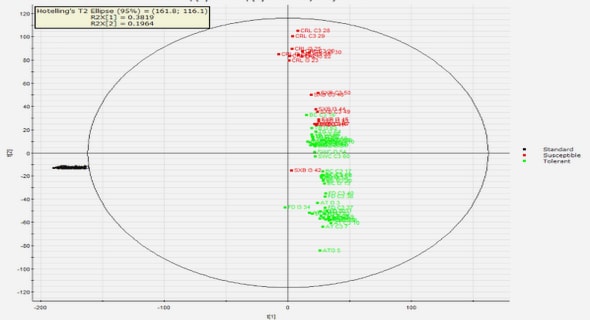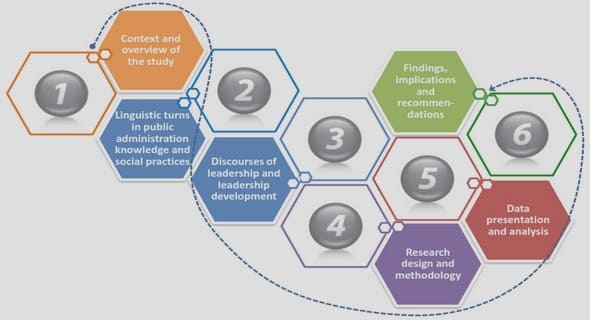Get Complete Project Material File(s) Now! »
CHAPTER 3 MANAGEMENT MODELS FOR THE MANAGEMENT OF VALUES IN SOUTH AFRICAN PUBLIC SCHOOLS
INTRODUCTION
Chapter two dealt with general issues concerning values with a view to unpack the complexity of what values are and how they manifest in society and in schools. This chapter will focus on the problem of managing schools by introducing democratic values. This will be done by indicating how certain models of management and leadership can create an environment conducive to an effective teaching and learning ethos in South African schools. It will thus focus on different styles of management and leadership and will indicate what role school principals play pertaining to the management of democratic values.
A host of models have been developed in the field of education, which include didactic models and school management models. It is important to focus on several management models in order to identify a model or models, which can assist in managing democratic values in schools because this researcher believes that values are hidden and cannot be managed as tangibles, for example, books and furniture. Furthermore, one has to acknowledge that the school does not stand alone but it is embedded in a particular society, with a particular history and a system of values. The discussion will focus on issues such as the ethos of the school, the school climate and the culture of the school. This chapter will also focus on the creation of an environment, which is conducive for all stakeholders to live according to democratic values. This will lead us to examine school management styles and leadership, which range from the autocratic styles of leadership to the democratic style of leadership.
A discussion of the school principal as a school manager will be provided. A detailed exposition of the school management team and the school governing body as catalysts for creating a people centred school conducive to human centred values will also be presented. The chapter will conclude by examining the concept of a so-called ‘learning school’ and how such a concept may assist managers to create a more conducive environment for effective teaching and learning. The factors that separate an effective school from an ordinary school will be pointed out and discussed. The concept of a learning school will be pivotal to foster, inter alia, professional and democratic values.
The next section focuses on the school as a value driven organisation.
THE SCHOOL AS AVALUE-DRIVEN ORGANISATION
From the onset it is important to point out that there is a difference between a value-driven school and a learning school. The exposition that follows below is mainly concerned with the school as a value-driven organisation and does not claim that a value driven school is congruent to a learning school. Nieuwenhuis et al (2007: 72), clearly point out that creating, nurturing and advancing values do not simply lead to a human rights culture and democracy; it must be managed and leadership must be provided. This can best be achieved by developing schools into learning schools. More about a school being a learning school will be tackled in a later section. In this section the focus is on a school as a value driven organisation.
The school as a value driven organisation has a communal aim. This aim is professional conduct by teachers which means that meaningful education takes place in the school and teaching and learning are the main priorities for the school (Nieuwenhuis et al, 2007:73). In this instance, this aim is achieved through the inculcation of values in learners, for example, using formal lessons and also through games.
In this particular instance, this aim would include the inculcation of democratic values in learners. The school follows a certain ordered structure which is value driven because it is not focused on certain input and output processes like a business. There is no question of production based on a profit motive. As an organisation, the school focuses mainly on people who have or ought to have a certain set of values. The school complies with universal values as well as individual values. The organisation called a school has desired ends in keeping with individual and collective values and needs. One of the desired ends of the school is helping learners to learn and become responsible human beings and citizens (Davidoff & Lazarus, 1997:6).
Some educationists would object to the notion of bringing particular values into the school curriculum and vindicating this as a direct attempt at moralising education. The submission that there must be a ‘value neutral’ or ‘value free’ education – saying nothing about values in the curriculum – does not mean that learners would not learn values. Values are enmeshed in everything a school does or aspires to be (Nieuwenhuis et al, 2007:66). They are fundamental and universal as far as education is concerned.
It is important to consider the debate centring around, for example, the issues of “whose values” should be taught and “how” this should happen. Opponents of the teaching of values in schools are essentially opposed to those values which are not their own and the manner in which they are taught – not to the teaching of values per se. A value driven school is a place where professional teaching and learning takes place in an inviting or enabling school climate.
What was said above is followed by a discussion of the school climate.
The school climate
The psychological side of human nature in an organisation is more readily affected by the climate of that organisation (Sergiovanni & Starratt, 2007:333). The same applies to schools as organisations. School climate is a broad term that refers to teachers’ perceptions of the general work environment of the school (Hoy, 1991: 221). School climate is influenced by the formal organisation, informal organisation, personalities of participants and organisational leadership. School climate includes a set of internal characteristics that distinguishes one school from another and influences the behaviour of its members – a shared perception of behaviour (Hoy, 1991: 221-222). The climate of the school is a matter of impression. It might be viewed as the enduring characteristics that describe the psychological character of a particular school, distinguish it from other schools and influence the behaviour of teachers and learners (Sergiovanni & Starratt, 2007:333; Davidoff & Lazarus, 1997:21).
The views of Litwin and Stringer (in Sergiovanni & Starratt, 2007:333) are that climate is the perceived subjective effects of the formed system, the informal ‘style’ of managers and other important environmental factors on the attitudes, beliefs, values and motivation of people who work in a particular organisation. It follows that climate focuses attention on the school’s interpersonal work life as it affects teachers, administrators, supervisors and learners. School climate can help or hinder teachers as they attempt to satisfy their needs at work, hence there is an open climate, which is supportive of learning, and a closed climate, which hinders learning.
From this exposition of the school climate, follows an in-depth discussion of the symbolic side of the school, that is, the school culture.
The culture of the school
Culture can be defined as a set of understandings or meanings shared by a group of people (Sergiovanni & Starratt, 2007:342). Kruger and Badenhorst (cited by Van Niekerk, 1999:45) say that school culture is generally described as a particular dimension of an organisation whose interaction with other aspects contributes to the uniqueness and excellence of that organisation. The views of Davidoff and Lazarus (1977:36) are that the culture of the school is central to utilise organisational development interventions. These meanings of culture are tacitly held and serve to define the group as being distinct from other groups. It portrays the symbolic side of school life, for example, language, legends, tales, punctuality and responding to issues of protocol in a positive and constructive way.
Other writers define culture as shared values, which are conceptions of what is desirable (Hoy et al, 1996:130). These authors (1996:126) feel that school culture can be interpreted by analysing the symbols at the school, artefacts, rites, ceremonies, icons, heroes, myths, rituals and legends. Davidoff and Lazarus (1997:20) say that a way of describing the culture of a school is by looking at ‘the way we do things here’. Observations and interviews would enable one to give a meaningful description of these cultural activities.
CHAPTER 1 BACKGROUND TO THE STUDY, PROBLEM FORMULATION AND AIMS
1.1 BACKGROUND TO THE STUDY
1.2 PROBLEM FORMULATION
1.3 AIMS OF THE STUDY
1.4 RESEARCH METHODS AND DESIGN
1.5 DEFINITION OF KEY CONCEPTS
1.6 LIMITATIONS OF THE STUDY
1.7 SUMMARY
CHAPTER 2 THE DEBATE AROUND VALUES AND MANAGING THESE VALUES IN SCHOOLS
2.1 INTRODUCTION
2.2 THE CONCEPT: VALUES
2.3 PHILOSOPHICAL CONSIDERATIONS ABOUT VALUES IN GENERAL
2.4 The 1948 United Nations Declaration on Human Rights
2.5 VALUES IN EDUCATION
2.6 TRADITIONAL AFRICAN THINKING ABOUT VALUES
2.7 BASIC HUMAN VALUES AND IMPLICATIONS FOR EDUCATION
2.8 SOUTH AFRICAN POLICY DOCUMENTS WHICH SPECIFICALLY GUIDE VALUES IN EDUCATION
2.9 VALUE SYSTEMS IN A COMMUNITY
2.10 THE PLACE OF VALUES IN SCHOOLS
2.11 SUMMARY
CHAPTER 3 MANAGEMENT MODELS FOR THE MANAGEMENT OF VALUES IN SOUTH AFRICAN PUBLIC SCHOOLS
3.1 INTRODUCTION
3.2 THE SCHOOL AS A VALUE-DRIVEN ORGANISATION
3.3 CULTURAL-HISTORICAL BASIS FOR THE EXISTENCE OF SCHOOLS
3.4 SCHOOL MANAGEMENT AND LEADERSHIP STYLES
3.5 THE SCHOOL AS AN INSTITUTION FOR LEARNING
3.6 THE UNIQUE ROLE OF THE SCHOOL PRINCIPAL AS A MANAGER OF DEMOCRATIC VALUES
3.7 SUMMARY
CHAPTER 4 RESEARCH DESIGN
4.1 INTRODUCTION
4.2 THE RESEARCH APPROACH
4.3 THE RESEARCH DESIGN
4.4 SAMPLING
4.5 DATA COLLECTION
4.6 DATA ANALYSIS
4.7 RIGOUR, TRUSTWORTHINESS AND CREDIBILITY
4.8 ETHICAL CONSIDERATIONS
4.9 SUMMARY
CHAPTER 5 DISCUSSION OF FINDINGS
5.1 INTRODUCTION
5.2 DISCUSSION OF DATA: PRELIMINARY FINDINGS
5.3 RECURRING EMERGING PATTERNS: PRELIMINARY FINDINGS
5.4 SUMMARY
CHAPTER 6 SUMMARY OF THE, FINDINGS, CONCLUSIONS AND RECOMMENDATIONS
6.1 INTRODUCTION
6.2 OVERVIEW OF THE THESIS
6.3 SUMMARY OF FINDINGS
6.4 RECOMMENDATIONS
6.5 RECOMMENDATIONS FOR FURTHER RESEARCH
6.6 CONCLUDING REMARKS
REFERENCES
GET THE COMPLETE PROJECT


